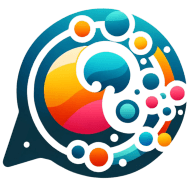12 Initiatives for Creating a Customer-Centric Culture
Discover innovative strategies for building a customer-centric culture in today's competitive business landscape. This article presents a collection of 12 initiatives, each offering a unique approach to enhancing customer experience and satisfaction. Drawing from expert insights across various industries, these practical examples demonstrate how organizations can effectively prioritize their customers' needs and preferences.
- Two-Way Matchmaking Builds Strong 3PL Partnerships
- Office-to-Field Immersion Enhances Customer Experience
- Student First Fridays Foster Continuous Improvement
- Roof Transparency Days Showcase Craftsmanship
- Shared Ownership Cultivates Client-Focused Web Development
- Patient Stories Drive Empathetic Orthopedic Care
- Customer Journey Mapping Transforms SEO Strategies
- Frontline Feedback Shapes Product Development
- Reader Replay Sessions Guide Content Creation
- Daily Customer Input Drives Healthcare Platform
- Employee Education Fosters Customer-Centric Culture
- Frontline Stories Inspire Rapid Solutions
Two-Way Matchmaking Builds Strong 3PL Partnerships
Creating a customer-centric culture isn't just a buzzword at Fulfill.com – it's the foundation of everything we do. When I founded this company, it was born directly from my own frustration as an e-commerce operator who cycled through three different 3PLs in just 18 months. That painful experience became our North Star.
Our most impactful initiative has been what we call our "Two-Way Matchmaking" program. Unlike traditional 3PL marketplaces that simply list options, we've built a rigorous vetting process that examines both sides of the equation. We don't just evaluate 3PLs on paper metrics – we assess their operational culture, technology integration capabilities, and how they handle exceptions (because in fulfillment, exceptions are the rule, not the exception).
For each potential 3PL partner, we conduct capability assessments covering everything from their WMS functionality to their approach to peak season planning. We've rejected plenty of providers with impressive facilities but poor customer service mindsets. This selective approach means our e-commerce clients get partners who align not just with their operational needs but their service philosophy.
The program has tangible results – a 92% satisfaction rate with initial 3PL matches and a significant reduction in mid-contract switches. One DTC beauty brand told me they'd wasted over $200K and eight months with mismatched partners before finding us.
Internally, we reinforce this culture through our "Client Journey Mapping" workshops where team members regularly revisit the fulfillment challenges from both the brand and 3PL perspective. Everyone from our developers to our account managers spends time shadowing warehouse operations annually.
In this industry, being customer-centric isn't just about friendly service – it's about truly understanding the complexity of fulfillment operations and the unique pressures facing both sides of our marketplace. When you've personally experienced the pain of poor fulfillment partnerships like I have, you build solutions with empathy at the center.
Office-to-Field Immersion Enhances Customer Experience
I launched an "Office-to-Field Immersion Day" program where, every month, one member of our back-office team accompanies technicians on two service calls. I initiate it by pairing them with a technician and setting three simple goals: observe client interactions, note any friction points, and ask homeowners what they value most about our service. This hands-on exposure compels everyone, even those behind a desk, to witness firsthand how our promises translate (or sometimes don't) in the customer's home.
When our accounts receivable specialist joined us last quarter, she observed a technician patiently explaining why we couldn't instantly trap critters and noticed the confused looks on clients' faces. Back at the office, she revised our invoice template to include a brief "why this takes time" sidebar and added a friendly "next steps" callout. Within two billing cycles, we observed a 25% decrease in invoice-related calls and emails, and our technicians reported more relaxed post-service handoffs. That single immersion day not only bridged the gap between support and service teams but also instilled a shared sense of ownership over the entire customer journey.
Student First Fridays Foster Continuous Improvement
Fostering a customer-first culture at Legacy Online School is what we do and live on a daily basis. It's not something that we strategize about; it's something that's part of who we are. There's one thing that has had a long-term impact that we call "Student First Fridays." We meet on Friday mornings to discuss feedback from parents and students, not just the good stuff, but where we can improve. We get involved in real-life stories, both positive and constructive, so that everyone from our counselors to our technical support staff gets a first-hand glimpse of what our students are experiencing.
We also take the time to recognize student accomplishments, whether it's a victory moment in a class or a family sharing how homeschooling has impacted their lives. This has created a feedback loop so everyone feels more invested in our mission, not just their own tasks.
What's really powerful is the attitude shift it brings. Every single person in the company is aware that we're here to actually make a real difference in the lives of our students. We're not about meeting expectations; we're about exceeding expectations in ways that create deep relationships, not mere transactions.
Customer-centricity is not a buzzword for us—it's how we show up each day.

Roof Transparency Days Showcase Craftsmanship
As an employee-owned company, we implemented "Roof Transparency Days" where customers can visit ongoing job sites to see our process firsthand. Every crew member is empowered to explain their work and answer questions directly. This initiative started when one homeowner mentioned feeling anxious about not knowing what was happening on their roof. Now, we proactively invite clients to witness our craftsmanship, from material delivery to final cleanup. This transparency has dramatically reduced customer anxiety and increased referrals because people can see the pride and precision in our work.

Shared Ownership Cultivates Client-Focused Web Development
We all get a buzz from launching a new client; that pride is infectious. However, the real culture shift comes from ensuring everyone feels ownership in that success. I always make sure the credit is well spread. Whether it's design, development, content, or even accounts, every hand that touched the project gets acknowledged.
One small thing that's had a big impact: we celebrate launches internally with a short debrief and mini round-up. We discuss what went well, what could be better, and always include a few words from the client if we can. It turns a deadline into a moment of shared pride, not just a task ticked off.
This naturally encourages everyone to stay customer-focused throughout the build. They know their work matters. The end result isn't just a site; it's a reflection of all our efforts, and that sense of ownership is the glue that holds a customer-centric culture together.

Patient Stories Drive Empathetic Orthopedic Care
Start with the Human, Not the Chart
A customer-centric culture doesn't stem from policy—it emanates from how we lead, listen, and show up every day. At ROSM, we create space to regularly share real patient stories—not just the results, but the feelings and struggles that accompany them. These narratives keep us grounded. They remind our team that we're not merely treating injuries; we're helping people reclaim their lives. This simple shift—from clinical to personal—has shaped how we hire, train, and connect across all nine clinics. Empathy isn't a one-and-done lesson—it's something we must nurture, repeatedly and deliberately.

Customer Journey Mapping Transforms SEO Strategies
We implemented "Customer Journey Mapping" sessions where our entire team walks through actual client websites as if they're potential customers—clicking, searching, and experiencing every touchpoint. This exercise revealed that our most successful SEO campaigns weren't just about rankings; they were about understanding what customers actually need when they search. For instance, we discovered that "best plumber near me" searchers want immediate contact information and emergency availability, not lengthy service descriptions.
At Scale by SEO, we help businesses rank higher, get found faster, and turn search into growth by putting customer intent at the center of every strategy. This customer-first approach transformed how we create content, optimize pages, and measure success—because when you truly understand your audience, search engines reward that authenticity with better visibility and higher conversions.
Frontline Feedback Shapes Product Development
At a previous company, we set up regular sessions where the Customer Success and Support teams shared distilled feedback with Product. Not raw complaints or ticket logs, but insights. We'd group themes, explain the root cause, and suggest actions that could actually move the needle.
This helped Product prioritize what mattered, helped Design see where users got stuck, and gave Marketing sharper messaging around what customers cared about most. That habit of turning frontline signals into actionable insights helped shift the mindset from feature-first to customer-first.
Reader Replay Sessions Guide Content Creation
As Head of Audience Experience & Engagement at our animated book summary company, one of my key goals is to ensure that every viewer feels understood.
To create a customer-centric (or should we call it viewer-centric) culture, we launched a program called 'Voice of the Reader'. This initiative started as a simple post-video survey and evolved into a company-wide effort that directly shapes our content pipeline and tone of voice.
Instead of relying solely on analytics, we invited our audience (teachers, students, lifelong learners) to share what they liked, what they wished was different, and which books or topics they wanted animated next.
But there's a twist: we didn't bury this feedback in spreadsheets. Every month, we hold a Reader Replay session where our creative, scriptwriting, and marketing teams review real feedback together and vote on which insights to act on next.
This shifted our mindset from just 'delivering content' to 'building learning moments people actually crave.' We added a new series called 'Big Ideas in 90 Seconds', which was directly inspired by feedback from busy professionals who wanted takeaways fast. Engagement rates on those summaries almost doubled compared to our standard ones.

Daily Customer Input Drives Healthcare Platform
Creating a customer-centric culture at Carepatron starts with listening. We've built tight feedback loops into every part of the business, from product development to support. Every decision we make is shaped by what we hear from the people using the platform. That's the culture we've built, one where customer input isn't something we collect once in a while; it's something we rely on daily.
One of the most important things we do is ensure feedback is shared openly across the team. Product insights don't just stay with the product team. Everyone sees what customers are saying, what they're struggling with, and what's working. We've created systems to track feedback, close the loop, and make sure nothing falls through the cracks. It keeps us honest and focused on what matters most.
This approach has helped us avoid building in a vacuum. When someone flags a friction point or a feature request, it goes straight into our prioritization process. We ask why, dig deeper, and figure out how it fits into the bigger picture. Sometimes that means saying no, but it always means responding clearly and showing that we're listening.
For us, being customer-centric isn't about a single program. It's about habits. Small, consistent actions that keep us close to the people we serve. This mindset helps us build better, move faster, and stay aligned with our mission.

Employee Education Fosters Customer-Centric Culture
The #1 way to create a customer-centric culture is to educate your staff about who your customers are, what they care about, and why they feel interested in your product (or competing products). This allows your whole organization to understand and empathize with your customers, which is the first step in developing a customer-centric culture.
Many businesses fail to develop a customer-centric culture because they put the cart before the horse. They teach their employees what to do in certain situations without providing them with the context to understand why this helps customers. By educating employees about customers, you can create a lasting customer-centric culture that evolves over time, as your entire team has the insight needed to build better processes and communicate with your customers as effectively as possible.

Frontline Stories Inspire Rapid Solutions
We maintain our customer-centric culture by allowing frontline stories to guide boardroom decisions. Every Friday, our sales representatives, title clerks, and even ranch hands leave brief voice notes about challenges families faced that week—ranging from a first-time buyer confused by zoning regulations to a grandmother nervous about English paperwork. I transcribe and categorize these clips in a shared dashboard. On Monday, leadership selects one theme and assigns a 72-hour solution—perhaps a bilingual FAQ video or a streamlined deed template. This closed-loop process not only solves problems quickly but also reminds every department that the heart of Santa Cruz Properties lies in the people walking our acreage, not in the spreadsheets tracking it. Because our financing is entirely in-house with **no credit check**, we have the flexibility to implement these improvements without waiting for third-party approvals. Since 1993, this listen-act-refine approach has transformed complex land purchases across Edinburg, Robstown, and Falfurrias into simple, dream-fulfilling steps for thousands of Texas families.






